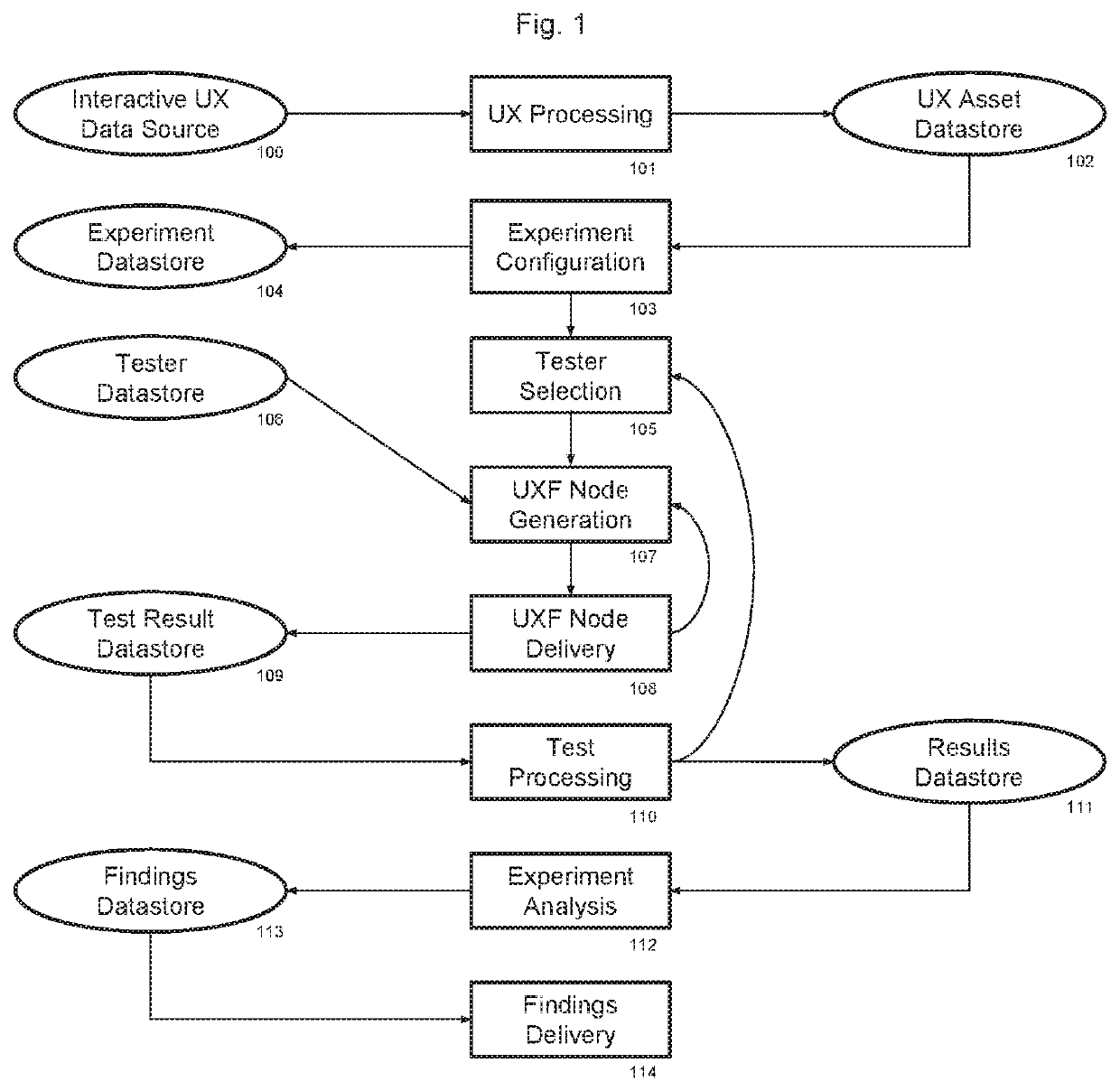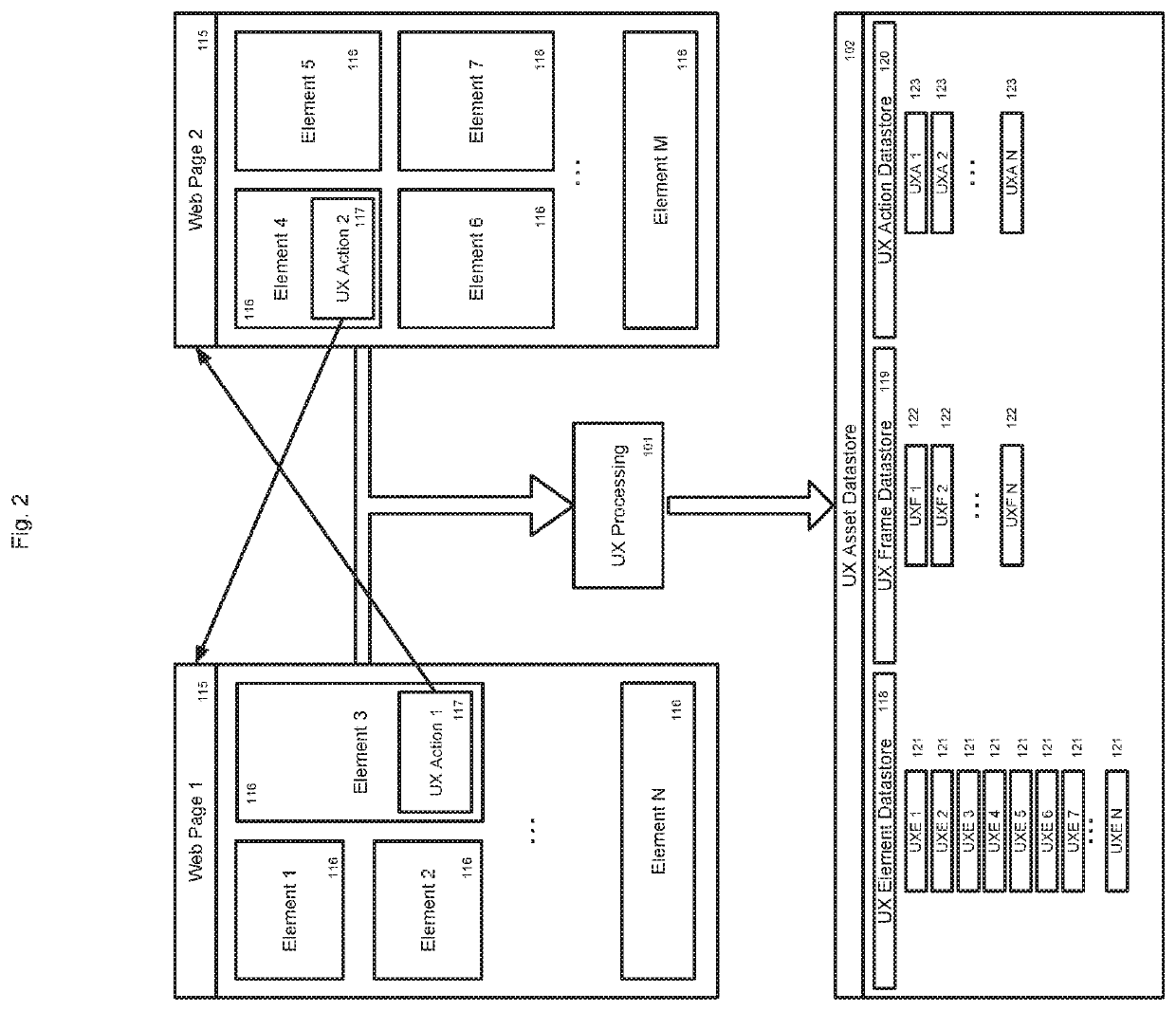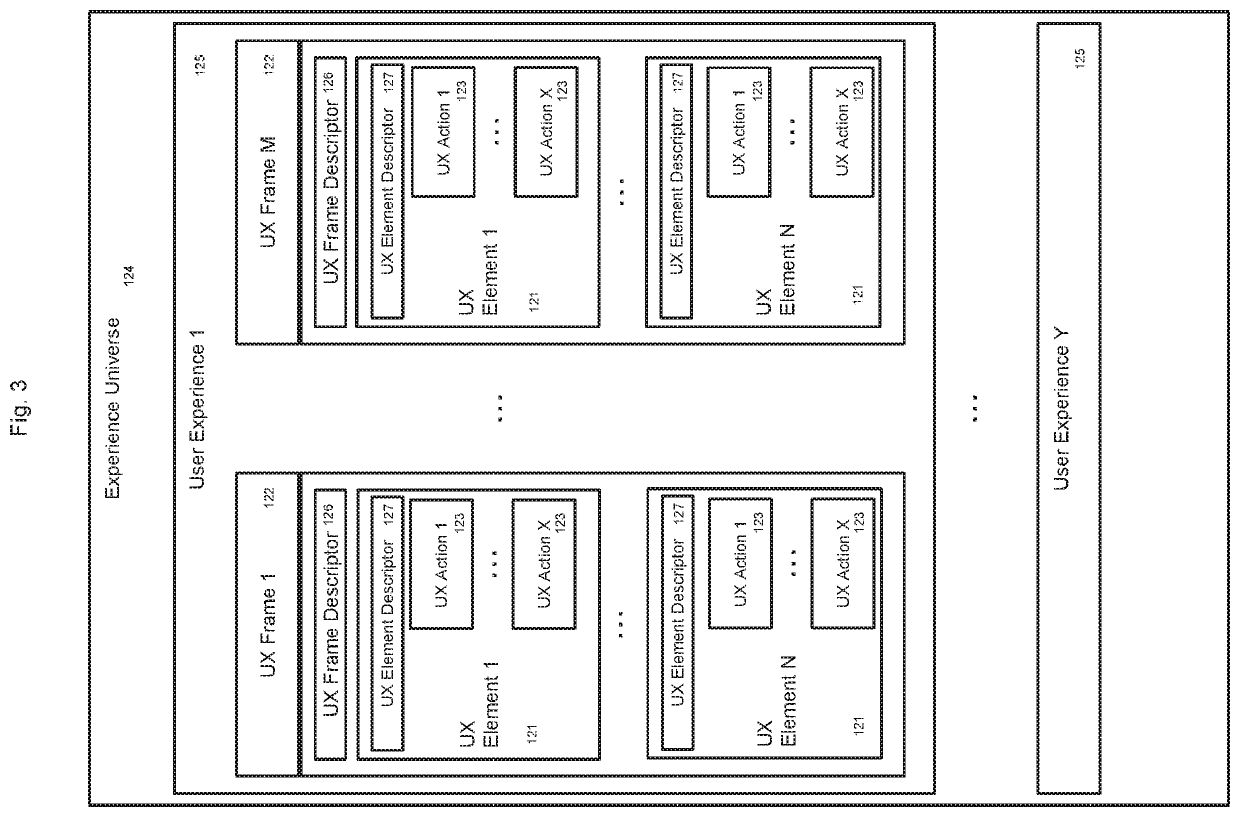Software as a service platform utilizing novel means and methods for analysis, improvement, generation, and delivery of interactive UI/UX using adaptive testing, adaptive tester selection, and persistent tester pools with verified demographic data and ongoing behavioral data collection
a platform technology, applied in the field of computer software as a service, can solve the problems of limited data points provided by tester pools, small size of dedicated tester pools, and insufficient diversity
- Summary
- Abstract
- Description
- Claims
- Application Information
AI Technical Summary
Benefits of technology
Problems solved by technology
Method used
Image
Examples
Embodiment Construction
[0012]Referring now to the invention in more detail, in FIG. 1 there is shown an overview of the data flow model of the present invention. A data source from an interactive UI / UX source 100 is accessed by the system and is addressed by the UX processing 101 component. The UX processing 101 component processes the data source from the UX source 100, first generating an algorithmic representation of an interactive user experience (finite state machine, structured graph, etc.) from the UX source 100 then decomposing that representation into a discrete set of assets (user experience frames 122 or UXFs), user experience elements 121 or UXEs, and user experience actions 123 or UXAs) that together characterize all possible states and transitions for a specific interactive user experience 125 or UX. The set of all possible interactive user experiences 125 for a specific experiment is known as an “experience universe”124 or XU.
[0013]In more detail, still referring to the invention of FIG. 1,...
PUM
 Login to View More
Login to View More Abstract
Description
Claims
Application Information
 Login to View More
Login to View More - R&D
- Intellectual Property
- Life Sciences
- Materials
- Tech Scout
- Unparalleled Data Quality
- Higher Quality Content
- 60% Fewer Hallucinations
Browse by: Latest US Patents, China's latest patents, Technical Efficacy Thesaurus, Application Domain, Technology Topic, Popular Technical Reports.
© 2025 PatSnap. All rights reserved.Legal|Privacy policy|Modern Slavery Act Transparency Statement|Sitemap|About US| Contact US: help@patsnap.com



